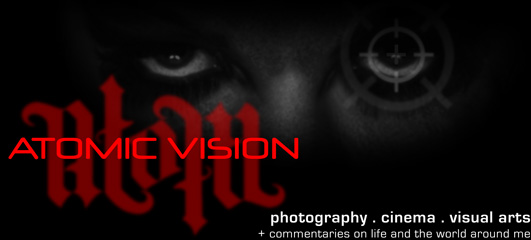"How we see" and "what we see" have always been facinating to me. I have always professed that we see with our minds, more than our eyes -- because informational pattern and meaning can only be comprehended by filtering it with our brain. The "eye" is of primary importance because it is where light enters and is focused, but only after we have perceived order in the shapes, colors, shades and textures mentally do we really "see" and give meaning to the visual information we receive.
"Gestalt psychology" has been studying visual perception and how we see since the 1920s. Gestalt psychologists believe that the brain is holistic, parallel and analog, with self-organizing tendencies. They believe that our minds have an innate tendency to see patterns first, before analyzing details; or that we have a tendency to see 'relationships' between individual components as parts of a 'whole,' whether they were intentionally assembled or accidental. The "gestalt effect" is the form-generating capacity of our brain to see figures and whole forms instead of a collection of random lines, shapes or shades.
"Gestalt perception" is illustrated in these examples
A few "Gestalt" principles
"Perception and Imaging: Photography - A Way of Seeing" is a guide to this facinating world of Gestalt perception. Written by an expert in the field of Photography and Imaging sciences, Richard Zakia, the book throughly examines visual perception and presents a compelling perspective on "how we see." Richard is Professor Emiritus at the Rochester Institute of Technology and served as chair of the Fine Art Photography department and the Graduate Program in Imaging Art. He has written 13 books on photography and was the prodigy of Rudolf Arnheim, art and film theorist, perceptual psychologist and the leading proponent of gestalt perception.
Here is an excerpt from the preface of the book:
"Photography has not changed since its origin except in its technical aspects which for me are not a major concern." -- Henri Cartier-Bresson
"This 1978 statement by Henri Cartier-Bresson is worth considering, particularly with the increasingly sophisticated imaging technology currently available. Regardless of the medium used, how high tech it might be, and with what speed images can be manipulated, it is the human factor that is important. Pictures, regardless of how they are created and recreated, are intended to be looked at. This brings to the forefront not the technology of imaging, which of course is important but rather what we might call the "eyenology" (knowledge of the visual process -- of seeing).
What is known about vision and the visual process is overwhelming; what is directly applicable to pictures is not, and this book presents as an introduction. We take the eye and how we see for granted. But scientists studying the visual process and working in congnitive science recognize its complexity. Our visual process is unique and how it functions is still somewhat of a mystery."
The book is now in its 3rd edition, because it is invaluable to visual professionals and amateurs alike. Everyone involved in image creation and manipulation (visual artists, filmmakers, editors, graphic artists, advertising creatives) will greatly benefit from reading this book. I highly recommend it!
--excerpt and image taken from Perception and Imaging: Photography - A Way of Seeing by Richard D. Zakia. Focal Press, Elsevier Inc. 2007.















No comments:
Post a Comment